Galleries
Jason Rulnick On Why Collecting Art is an Emotional and Spiritual Journey
Jason Rulnick offers his collecting tips to live by.
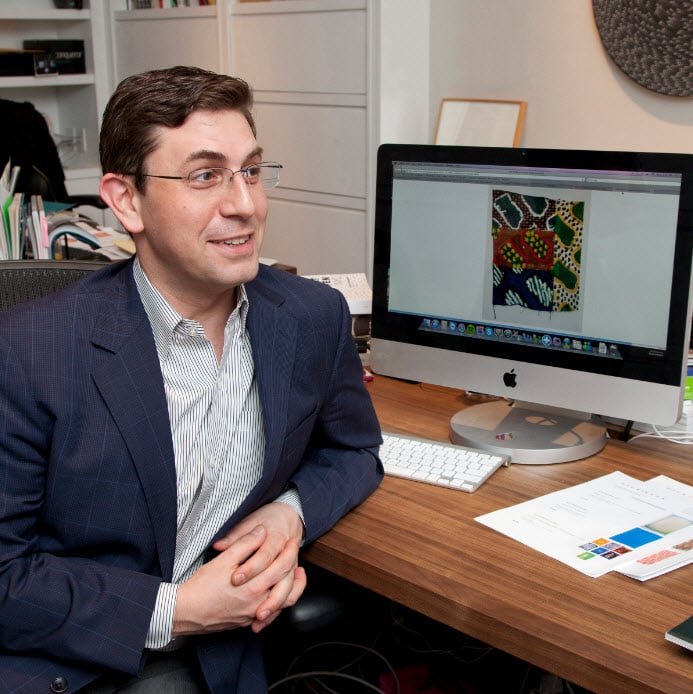
Jason Rulnick offers his collecting tips to live by.

Artnet News

Over the years, Jason Rulnick has played many roles in the art world. He’s been the artist, the museum worker, the gallery owner, and now the art advisor. His experience working in all realms of the art world has prepared him well for his current role because he knows what is at stake in every scenario. He also knows that collecting art is not just a monetary investment but also an emotional and spiritual one. Here, he lets us in on a few of his thoughts about buying and collecting art for both the experienced and the inexperienced.
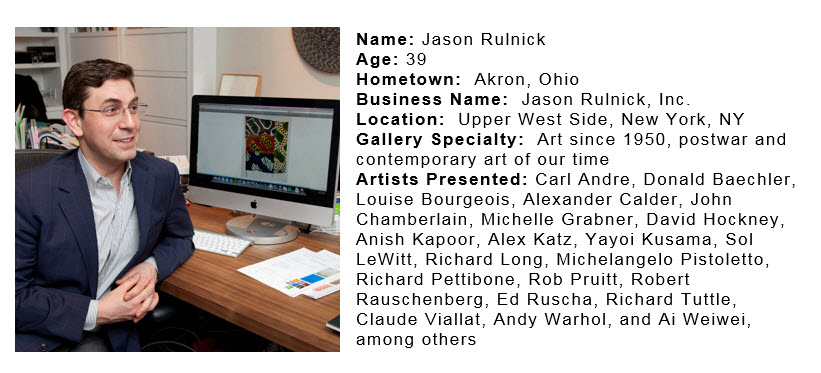
Photo by Amber De Vos. adevosphoto.com.
Tell us about your background in art and what led you here.
Growing up in Akron, Ohio, I had a few summer art classes at the University of Akron and Kent State University. Through the Akron Art Museum, I became familiar with structures of Sol LeWitt, a big head portrait from Chuck Close, a crazy looking painting from Frank Stella—at Kent State, it was Robert Smithson’s Burried Shed. I knew art didn’t have to be a picture of a particular thing, but it could be the thing itself. The artist was in control of the viewer.
In 2000, I finished school at the San Francisco Art Institute, and worked at SFMoMA for Sol LeWitt on his retrospective–I was installing “Wall Drawings” and showed up to work early and stayed late every day and built the bridge to move to New York after school, where I thought I would be a conceptual artist. Instead, I was drafting “Wall Drawings” in private residences, and, by looking around these collections, I began to understand the difference between the art world and the art market.
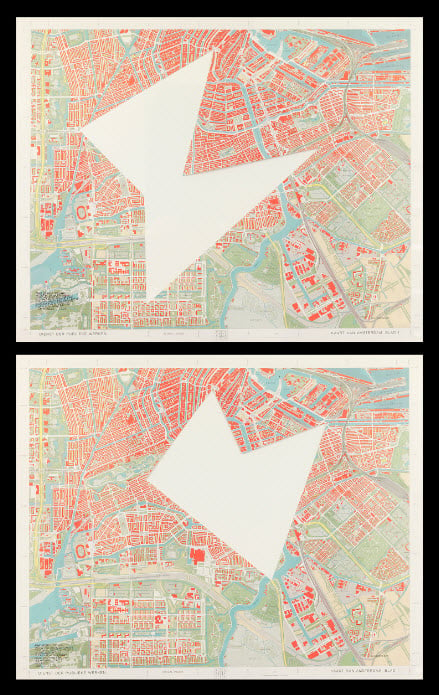
Sol LeWitt, R653: Map of Amsterdam with the area between Su- riname-Plein, the Dam Mozartkade, Pretorius Plein Zuidholland Straat and Minerva Plein removed (1976). R647: Map of Amsterdam with the area between the Dam, Art and Project, Utrechtse-Brug, Zeeburgerstraat and Achtergracht removed (1976).
How do you describe what you do?
I like to share art with people. In business, I’m most known for having an opinion and keeping people out of trouble. I attract clients that are new to art collecting and they are comforted to know of my experience with studio art, its history, and the world of private dealing. It is a job where you are always working, hunting, gathering, and seeking the next opportunity that is going to open into the next world.
What do you like about being collector-oriented?
From 2006 to 2010, I had a gallery in Chelsea, then in Midtown, and I represented many artists that I went to school with. But as my life changed—being married, having children—I felt the need to be more practical and treat my interest in art more as a business. The client of my business became a collector, not an artist; this really set off a spark in me. I like educating my clients about artists and artworks, but also any client of mine would say I find very clever solutions to their problems, and have added an advantage to their pursuit.
Would you like to deal directly with artists at some point?
Having done this a bit, it was too challenging for me coming from a studio art background. It always seems that emotions dictate the way you handle an artist, but “in an art deal” with a collector, it’s a different focus. Here, I am able to work with clients I like and the artwork I like. I once worked directly with an artist who I began to sell, and, as money started coming in, they scoffed, telling me all I did was “send out a postcard.” That was very upsetting. So I admire dealers that represent artists, but it’s just not for me now.
What do you think it means to be a collector? Is it more about patronage or investment? What types of collectors do you like working with?
Collecting at this level can be capital intensive, but for myself, and for the majority of my clients, it’s a process of self-discovery and living through and living with the art of our time. I appreciate working with collectors that enjoy the journey as much as the destination and are interested to build that long-term relationship. As a former artist, I cannot say if it’s more about one or the other. I do understand why some would think of it as an investment.
Are you a collector? What type of work do you collect?
I collect work that I feel will enhance my life. There is that psychic dividend (happiness, comfort) that you receive by waking up in the morning and looking at your favorite artwork. Sometimes, I will pursue a particular artist because I feel that I can’t make it through a particular time in my life without having the artwork near to me. It is like a song you want to listen to a lot. Living with artwork is almost like a support system, and, often, the collectors that find me most valuable agree with this idea that living with art itself is a dialogue and a relationship.
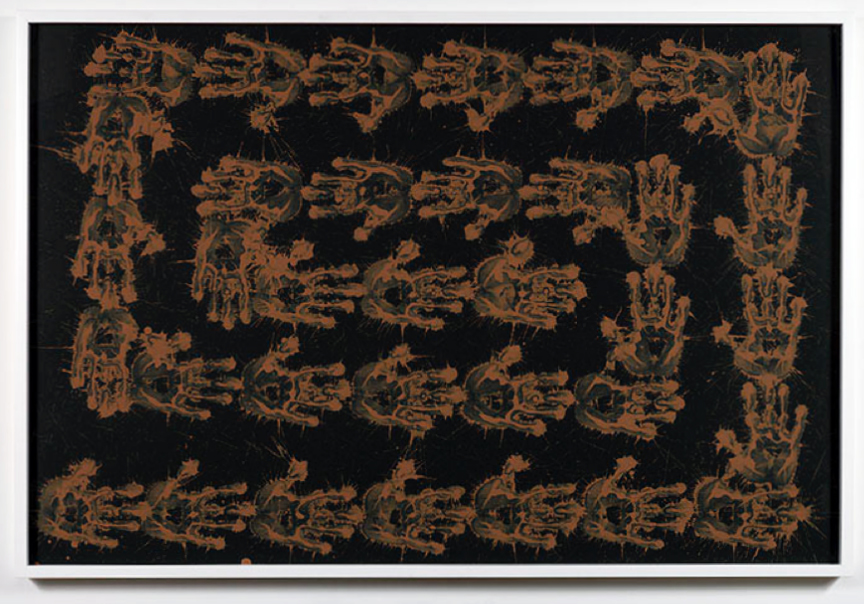
Richard Long, red Vallauris clay on black, 41 x 61 inches (2010).
What advice can you give to a first-time collector?
Seek professional help. Just kidding. Look, listen, and decide. If you can’t decide, then the timing isn’t right for you. Use all of your senses—what you hear, what you feel, what you see—and if you can’t make a decision based on your own senses, then, again, the timing just might not be right. Be willing to make mistakes. There is no crystal ball. One thing leads to another. And no advisor or dealer or gallery will ever care as much about yourself as you do.
What are some of the challenges of working in the secondary market?
In the secondary market, sometimes you are swimming with the sharks. You are up against noise from the trade, the auction houses, countless art fair pre-offerings, estimates, deadlines, things getting vomited onto you—and although I started in the secondary market, the greatest joy can be bringing a client into the primary market to buy directly from a gallery. In the primary market, it’s not like buying a car. You can’t just walk in and buy what you like when you want, and do whatever with it—if you respect the galleries and the wishes of the artist, you will have greater access. It’s a two-way street.
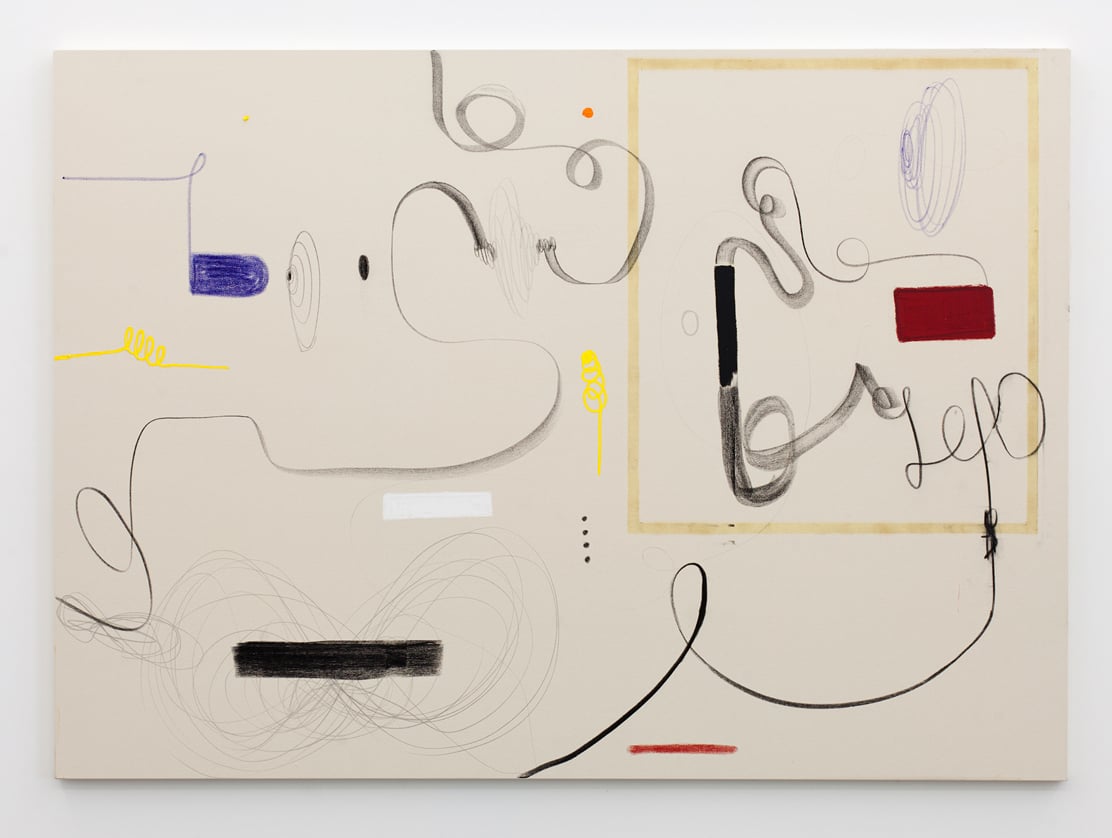
Christian Rosa, TBT 004 , charcoal, oil paint, clear gel on rabbit skin glue primed canvas
70 3/4 x 98 1/4 inches (2014).
If you were not an art dealer, what would you be doing?
Marcel Duchamp is most known for the idea of the ‘readymade.’ I think the Earth is the greatest ‘readymade,’ and I’d love to do something involving the Earth or the environment or something that helps our time achieve a more sustainable life.
What types of projects would you like to do in the future? Do you want to do more exhibitions?
I’ve done a few projects with galleries over the past years where I’ve focused on some type of historic material, and working with a gallery lets me present my interest to a new audience. I love choosing my own adventure in art and developing an idea or a collection to the point where it’s ready for an audience that I’ve also managed to somehow put together.
Composer/musician Brian Eno said, “There are so many people trying to hit the center of the target in the art world—I try to shoot my arrow and have the target form around it.” This takes a few things that I’m known to share with my clients—as well as ideas, confidence, and risk. It can really be a lot of fun, but it doesn’t come easy. I feel I’ve started to distinguish myself; there are far fewer people on that extra mile.
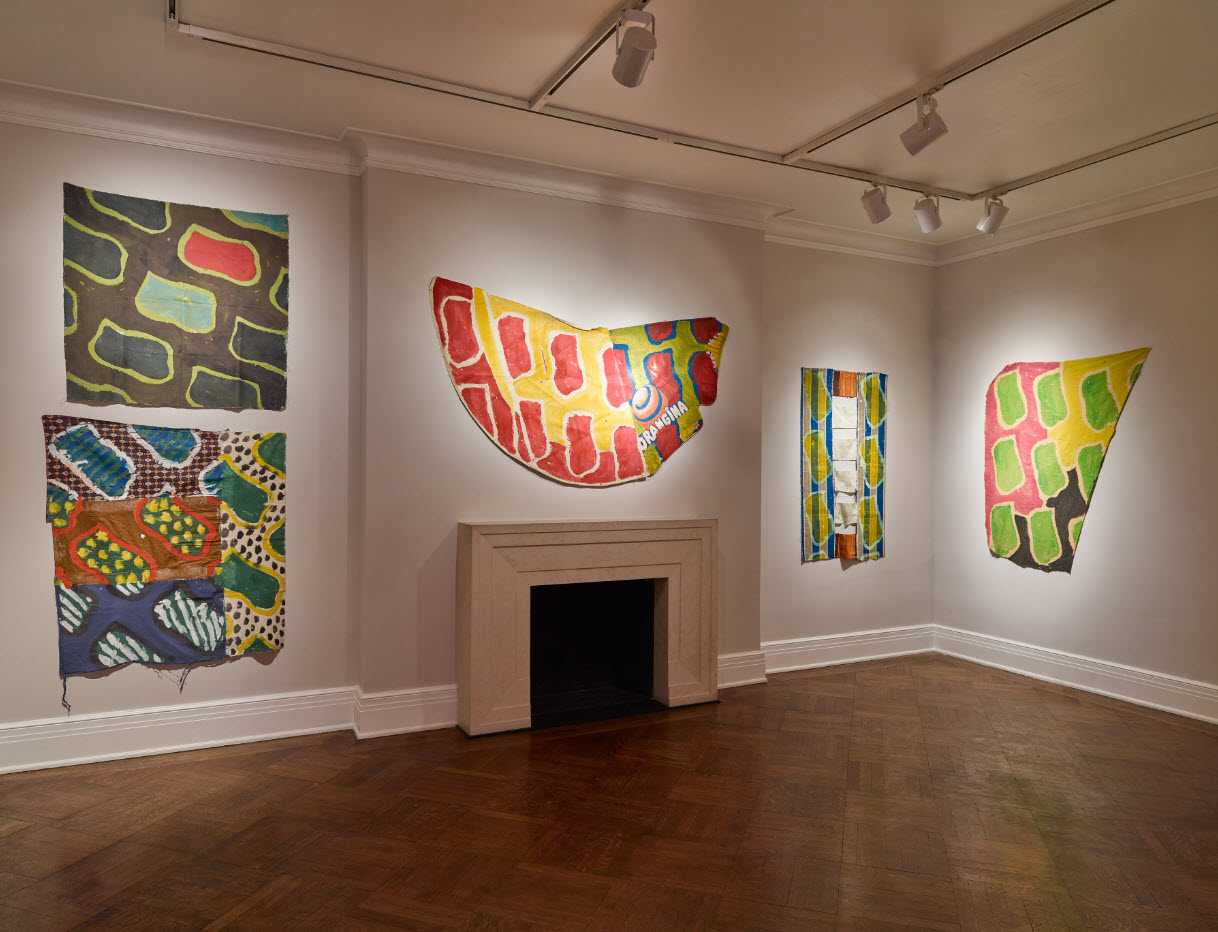
Claude Viallat featured at Dickinson Roundell Gallery, New York, March 2015.